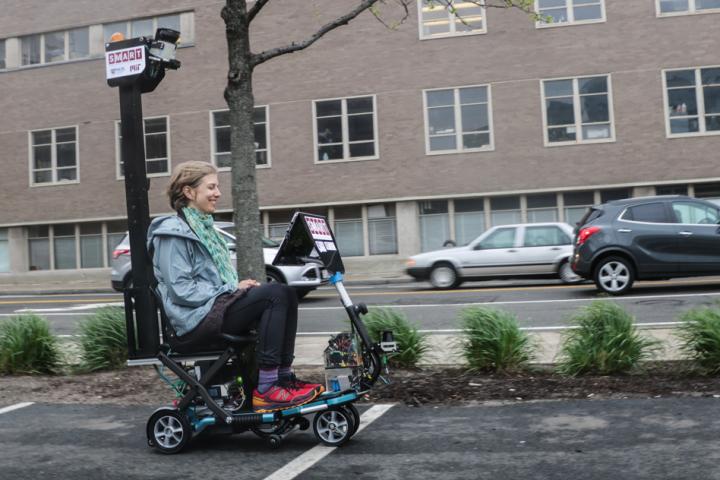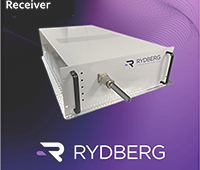
An autonomous mobility scooter and related software were designed by researchers from MIT’s Computer Science and Artificial Intelligence Laboratory (CSAIL), the National University of Singapore, and the Singapore-MIT Alliance for Research and Technology (SMART). (Credit: Autonomous Vehicle Team of the SMART Future of Urban Mobility Project)
Soon you’ll be able to hop on your driverless scooter, ride down the hall, get into a driverless golf cart and take that across the parking lot before you get into a driverless car.
Last spring at MIT’s 2016 Open House, more than 100 visitors took rides on an autonomous mobility scooter in a trial of a software designed by researchers from MIT’s Computer Science and Artificial Intelligence Laboratory (CSAIL), the National University of Singapore and the Singapore-MIT Alliance for Research and Technology (SMART).
The trial scooter features control algorithms that will work indoors and outdoors.
“We were testing them in tighter spaces,” Scott Pendleton, a graduate student in mechanical engineering at the National University of Singapore and a research fellow at SMART, said in a statement. “One of the spaces that we tested in was the Infinite Corridor of MIT, which is a very difficult localization problem, being a long corridor without very many distinctive features. You can lose your place along the corridor. But our algorithms proved to work very well in this new environment.”
The scooters will use the same control algorithms as autonomous golf carts and city cars, which enable researchers to perform reliable analyses of the system’s overall performance.
“If you have a uniform system where all the algorithms are the same, the complexity is much lower than if you have a heterogeneous system where each vehicle does something different,” Daniela Rus, the Andrew and Erna Viterbi Professor of Electrical Engineering and Computer Science at MIT and one of the project’s leaders, said in a statement. “That’s useful for verifying that this multilayer complexity is correct.”
The new scooters include low-level control algorithms that enable the vehicle to respond immediately to changes in the environment, route planning algorithms, localization algorithms that the vehicle uses to determine its location on a map, map-building algorithms that are used to construct the map in the first place, a scheduling algorithm that allocates fleet resources and an online booking system that allows users to schedule rides.
Having the algorithms uniform between different types of autonomous vehicles enables the vehicles to transfer software from one vehicle to another and allows one vehicle to substitute for another when a certain one is unavailable.
Previously, researchers used the same sensor configuration and software in trials of autonomous cars and golf carts, so the new trial completes the demonstration of a comprehensive autonomous mobility system.
The researchers described the design of the scooter system and the results of the trial in a paper they presented at the IEEE International Conference on Intelligent Transportation Systems in Brazil on Nov. 1. Joining Rus, Pendleton, and Ang on the paper were You Hong Eng, who leads the SMART autonomous-vehicle project, and four other researchers from both NUS and SMART.
R&D previously covered advances in navigation techniques for driverless cars in October.




